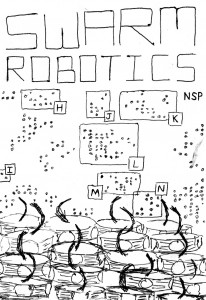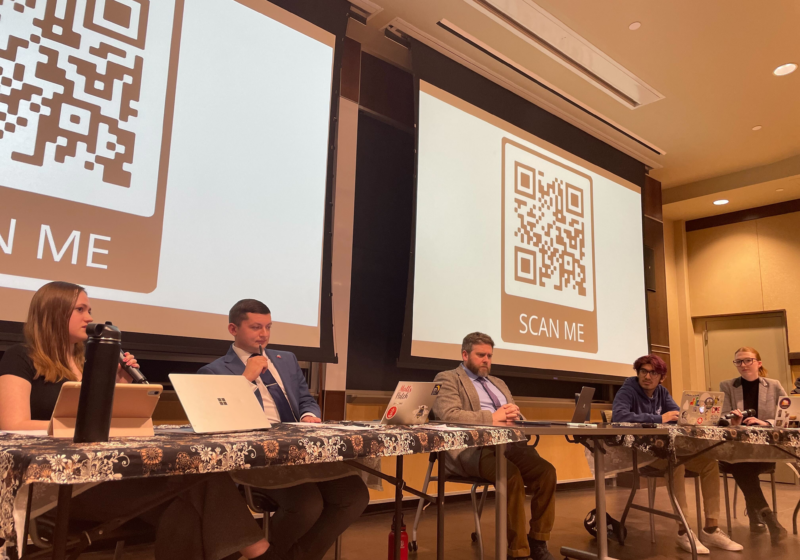It’s a standard Terminator rip-off. A swarm of tiny glittering spiders, explained early in the film by a naive scientist as a means of deconstructing sewer clogs, have gone rogue. Like a swarm of ants, the tiny robots move in eerie concert to achieve tasks impossible for the individual: opening doors, flooding through vents, and piping to demonstrate their newfound enthusiasm for deconstructing vapid teenagers.
Real swarmbots, as with many prospective technologies played up by Hollywood, are much less threatening. The thousands of tiny cube or spider robots created by Harvard and MIT look more like toys than anything, blundering and bumping into each other as they try to self-organize like the world’s most technologically sophisticated toddler’s blocks.
But apart from the adolescent fantasies of computerized attack, their purpose of teaming together to achieve tasks is not fundamentally different from their Hollywood counterparts, nor is their being compared to swarms of ants or birds that make up natural cooperative formations.
The advantages of using a swarm of small robots instead of a larger, specialized one are multifold. Smaller robots are lighter and more mobile, can access enclosed spaces, and the failure of one individual will not dramatically impact the abilities of the swarm (as opposed to a large robot, where a single minor failure could disable the entire system).
There is also an excellent relationship between cost and adaptability, since one inexpensive platform can be used to build many different conglomerated systems. By definition, they are meant to be greater than the sum of their parts.
The scientists working on the M-Blocks project at MIT see their robotic cubes like computer screen pixels, their size dictating the “resolution” of the larger whole. Build them small enough and they could even be used to perform biomedical tasks, clearing arteries or repairing organs on demand. On a household scale, they could be used to create common objects before disassembling and returning to storage to prepare for the next project.
“We want hundreds of cubes, scattered randomly across the floor, to be able to identify each other, coalesce, and autonomously transform into a chair, or a ladder, or a desk, on demand,” John Romanishin of the M-Blocks laboratory said.
Other applications could include space and underwater exploration, according to the reasearchers the researchers at the IST Swarm lab, or rescue and military missions, say the engineers of the flying quadrotors swarm in the GRASP lab at UPenn. In each case, the malleability of the system is key, whether it’s for navigating complex environments, performing unusual tasks, or forming dynamic objects.
So while the murderous robo-ants are probably a ways off, keep an eye out for the helpful robo-cubes or buzzing quadcopter swarms. In a few years, they might be doing everything from filming your sporting events to forming your footrest.
Copeland is a member of the class of 2015.






